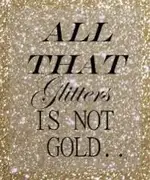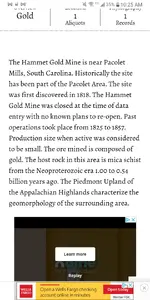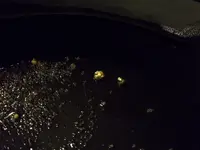Navigation
Install the app
How to install the app on iOS
Follow along with the video below to see how to install our site as a web app on your home screen.
Note: This feature may not be available in some browsers.
More options
You are using an out of date browser. It may not display this or other websites correctly.
You should upgrade or use an alternative browser.
You should upgrade or use an alternative browser.
Gold specimens found and what the crush looks like
- Thread starter Ore-lock
- Start date
RTR
Gold Member
- Nov 21, 2017
- 8,180
- 32,481
- Detector(s) used
- Teknetics Liberator
Falcon MD-20
***********
Blue Bowl
Angus MacKirk sluice
Miller Table
- Primary Interest:
- All Treasure Hunting
No,no,no
That looks like gold colored mica. It looks a lot like gold. Here's how you tell the difference. Take a small flake of it and put it on a hard surface. Take an ordinary straight pin and stick it in the flake. Mica will shatter. Gold will flatten.
islamoradamark
Silver Member
- Aug 26, 2016
- 3,630
- 3,993
- Primary Interest:
- All Treasure Hunting
Nice pictures
Wildcat1750
Gold Member
- Nov 18, 2012
- 5,015
- 4,107
- 🏆 Honorable Mentions:
- 4
- Detector(s) used
- AT PRO/Ace 250w8.5x11" DD Coil/
Garrett Pro-Pointer/Garrett Pro-Pointer AT/
Vibra-Tector 730/
Radio Shack Discovery 1000 (Tracker IV)
- Primary Interest:
- All Treasure Hunting
Can't wait for an update...
What happens next?
What happens next?
Ore-lock
Jr. Member
- Thread starter
- #8
While there is mica there it is very easy to pan out when using dial 1000 hand soap the first wash and then this miracle i discovered doing gold floatation experiments called simple green stainless steel polish on the second wash just spray it directly on the dried materials left from the first and the gold will literally float once it touches the water surface.That looks like gold colored mica. It looks a lot like gold. Here's how you tell the difference. Take a small flake of it and put it on a hard surface. Take an ordinary straight pin and stick it in the flake. Mica will shatter. Gold will flatten.
IMAUDIGGER
Silver Member
- Mar 16, 2016
- 3,398
- 5,195
- Primary Interest:
- All Treasure Hunting
You now know what mica schist looks like and feels like.
Don’t completely abandon the possibility of there being gold present. Sample the material surrounding the mica schist...crush and pan it to see if you have free milling gold.
Love to see your recovered gold.
Don’t completely abandon the possibility of there being gold present. Sample the material surrounding the mica schist...crush and pan it to see if you have free milling gold.
Love to see your recovered gold.
Last edited:
And you have to smelt it...
- May 28, 2010
- 19,749
- 31,085
- 🥇 Banner finds
- 1
- 🏆 Honorable Mentions:
- 1
- Detector(s) used
- Nokta Makro Legend// Pulsedive// Minelab GPZ 7000// Vanquish 540// Minelab Pro Find 35// Dune Kraken Sandscoop// Grave Digger Tools Tombstone shovel & Sidekick digger// Bunk's Hermit Pick
- Primary Interest:
- Metal Detecting
And remember, if you smelt it, you dealt it!

islamoradamark
Silver Member
- Aug 26, 2016
- 3,630
- 3,993
- Primary Interest:
- All Treasure Hunting
Believe that
RTR
Gold Member
- Nov 21, 2017
- 8,180
- 32,481
- Detector(s) used
- Teknetics Liberator
Falcon MD-20
***********
Blue Bowl
Angus MacKirk sluice
Miller Table
- Primary Interest:
- All Treasure Hunting
tlh2865
Jr. Member
- Jan 4, 2017
- 64
- 61
- Detector(s) used
- Garret AT Pro
- Primary Interest:
- All Treasure Hunting
Mining Engineering student here! A couple of things I'd like to toss out. I have never worked at a gold mine, but I know people who have worked in the gold mine in Kershaw SC. The Mica Schists can be a vector for gold and I am pretty sure it would have to be in a native form, but I do not know for certain (again, no experience in one of these deposits). You mention floating the gold, and while that is the way we liberate gold in an industrial setting, you have to crush it down to an extremely small size for it to work. Flotation only works when you make the target mineral/metal so hydrophobic that its attraction to air is stronger than the force of its weight which wants it to sink. Unless you use straight mercury as a collector, you'd have to have a specialized setup to float gold. You'd be better off trying to use a gravity separation method, like panning or a shaker table, if you actually have gold.
ajaj
Bronze Member
- Sep 14, 2012
- 1,126
- 1,530
- Detector(s) used
- Garrett AT Max
Minelab eTrac
Minelab Excalibur 8"
Makro Racer
- Primary Interest:
- All Treasure Hunting
Ore-lock: all of your posts show a bunch of shiny rocks. Some advice...I shall view your future posts if some precious metals are shown.
aj
aj
Shakakka
Hero Member
- May 11, 2017
- 664
- 1,938
- Primary Interest:
- All Treasure Hunting
And remember, if you smelt it, you dealt it!
And if you denied it, you supplied it!
Ore-lock
Jr. Member
- Thread starter
- #19
I appreciate your input as i have not been educated in this field and am running off everything i can learn thru the internet which is clustered mess of misinformation and just blatant lies. That being said the floatation technique i use actually works the steel polish actually targets the metallic minerals and your right i have to crush my material with mortal and pestal to baby powder consistency. But i have been looking at shakers. Hopefully one day. While im still in my first year of learning I aspire to be the best that i can be for there are great reasons behind me doing this far beyond personal gain. This is a path to enlightenment for me. Not just pulling gold from dirt but transforming the soul and purifying it this is my calling in life. I know it sounds crazy and i probably look insane but thats okay because i know my purpose and accept my destiny.
curbdiggercarl57
Silver Member
- Nov 19, 2007
- 4,362
- 1,043
- 🏆 Honorable Mentions:
- 1
- Detector(s) used
- Whites Silver Eagle, DFX, Shadow X-2
- Primary Interest:
- All Treasure Hunting
No,no,no
Those were the exact 3 words I mumbled to myself when I saw those photos.
Top Member Reactions
-
 3350
3350 -
 1900
1900 -
 1862
1862 -
 1163
1163 -
 1094
1094 -
 877
877 -
 836
836 -
 831
831 -
 825
825 -
 777
777 -
 770
770 -
 541
541 -
 519
519 -
 491
491 -
 434
434 -
 427
427 -
E
417
-
 402
402 -
 397
397 -
 396
396
Users who are viewing this thread
Total: 2 (members: 0, guests: 2)
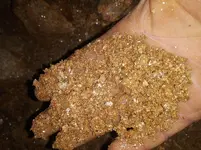
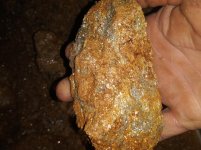
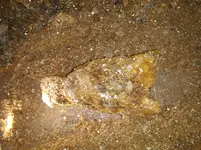
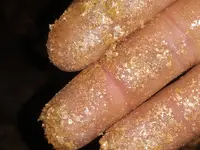
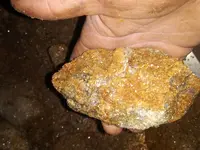


 Is there something wrong??
Is there something wrong??
